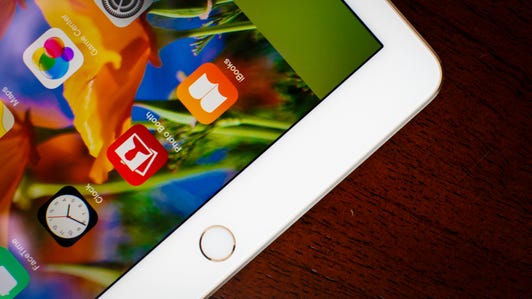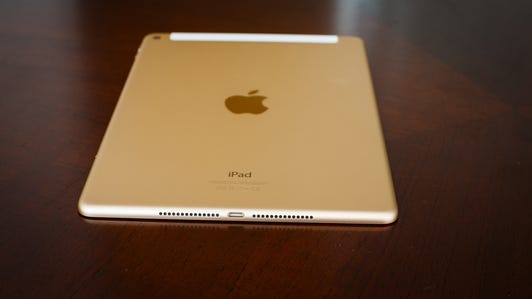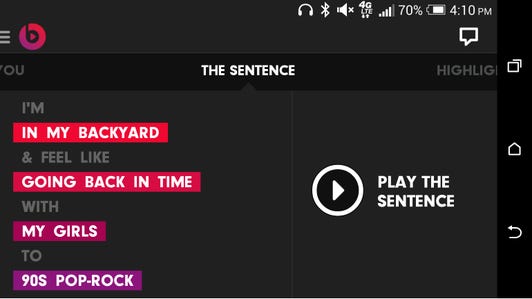
Shara Tibken/CNET
Apple has a lot to do to top 2014.
This year, Apple introduced larger screen iPhones, showed off its first wearable and launched a mobile-payments service. That was on top of updates to its Mac and tablet lines and improvements in its mobile and computer software. Apple also made its biggest acquisition ever by spending $3 billion on headphone maker and streaming music provider Beats.
In many ways, Apple next year will be building on what it announced in 2014. It will finally release the Apple Watch in retail stores and will expand Apple Pay and other services. It also will release new variants of its popular iPhones and iPads. But it could make some important tweaks to those devices, such as including a Retina Display in its MacBook Air or making a bigger screen iPad, which could attract a new group of customers.
Apple, of course, declined to comment about what’s ahead next year.
CNET breaks down the seven major things we expect — or at least hope — to see from Apple in 2015.
1. Apple Watch
The Apple Watch marks Apple’s first new product category since the “magical” iPad in 2010. It’s also the first new push by the company under CEO Tim Cook’s tenure. Cook had promised for over a year that Apple in 2014 would introduce
and enter
beyond its wildly successful smartphones, tablets and computers. The Apple Watch aims to fulfill that vow.
See also
- CNET’s first thoughts on the Apple Watch
- With new smartwatch, Apple buys itself some time
- iPad’s moment of truth? Apple looks to new Air to reverse tablet slide
- iPhone 6 promises happy holidays for Apple
Apple may have shown off the Apple Watch in September, but 2015 will mark the retail launch of the device. The precise timing is unclear, but Apple promises its first wearable will hit the market “early” in the year. The company will have to figure out how best to sell the smartwatch and allow consumers to try it on before they actually make a purchase.
The device, which starts at $349, comes in three designs — the stainless-steel-cased Apple Watch, the aluminum-cased Apple Watch Sport, and the 18-karat-gold-cased Apple Watch Edition. The devices must be paired with an iPhone, and are compatible with the iPhone 5 , 5C, 5S, 6 and 6 Plus.
Cook, introducing the Apple Watch, called the smartwatch a “breakthrough” product. He described it as a “comprehensive” health and fitness device, walkie-talkie and remote control for the Apple TV streaming-box. Those factors alone set the Apple Watch apart from other smartwatches on the market, which tend to simply track steps, provide notifications and run very basic apps.
“Apple Watch is absolutely the biggest product we know of at this point,” Jackdaw Research chief analyst Jan Dawson said. “With the iPad flagging a bit, they’re reliant on the iPhone and the Apple Watch to drive faster growth.”
2. Bigger iPad Pro
Apple’s iPad line has been struggling in recent months, with sales dropping three quarters in a row. Apple’s newest tablets hit the market in October, but analysts say the incremental changes likely aren’t enough to attract buyers in droves. Large screen smartphones are eating away at the need for a tablet, and consumers hold on to their iPads longer than their smartphones. Apple now faces questions over whether the iPad’s declining shipments are a temporary hiccup or a troubling trend.
Tech research firm IDC in November said the worldwide tablet market likely saw “massive deceleration” in 2014, with year-over-year tablet growth slowing to 7.2 percent from 53 percent in 2013. A big reason for that is what’s expected to be the first full calendar year of declines for Apple iPad shipments.
iPad Air 2: Up close and personal with the latest iPad (pictures)






One thing analysts say could boost iPad sales is the introduction of a bigger screen tablet dubbed the “iPad Pro.” The device is expected to sport a 12.9-inch display, putting it more in line with Mac computers than Apple’s tablets, which currently top out at 9.7 inches. MacBook Airs come with screen sizes of 11 and 13 inches, and MacBook Pros are 13 inches and 15 inches.
Many of Apple’s rivals have introduced larger screen tablets, including Samsung with its 12.2-inch, Android-based Galaxy Tab Pro and Galaxy Note Pro, and Microsoft with its 12-inch, Windows-based Surface Pro. The tagline for Microsoft’s device is it’s “the tablet that can replace your laptop.”
For Apple, introducing a bigger screen could attract a whole different range of customers, particularly business users. That’s one area Apple has been targeting through its new partnership with IBM and a segment it’s counting on to boost iPad sales. Having a bigger screen iPad, particularly if it has accessories like detachable keyboards, could allow people to truly replace their computers with a tablet.
Still, some analysts believe an iPad Pro wouldn’t sell in the high numbers of previous iPads.
“That’s a 5-percent-of-the-market kind of product,” said Bob O’Donnell, chief analyst at Technalysis Research. “That 5 to 10 percent will love it, but not everybody’s going to necessarily want it.”
3. IBM partnership and business users
Along with the anticipated iPad Pro, Apple will be looking at other ways to expand with business users, primarily through the partnership it formed with IBM in July.
The two companies have been working together on pushing Apple devices and iOS apps to business users. IBM’s cloud computing services — such as device management, security and analytics — will be optimized for iOS. Apple a year ago also made its iLife and iWork software free with new Mac and iOS purchases. And Microsoft in March finally made its widely used Office software work on iOS.


Now playing:
Watch this:
Why Apple Pay may be more exciting than the Apple Watch
1:41
During Apple’s fiscal fourth-quarter earnings call in October, Cook said the IBM partnership “aims to define the way work is done, address key industry mobility challenges and spark true mobile-led business change.”
Apple and IBM in December already introduced the first crop of apps resulting from their partnership, with the software spanning industries including airlines, telecommunications, insurance, banking and government. In 2015, we’ll likely hear about more apps IBM has built for customers that are less sensitive to price and seasonality than consumers.
“They’re looking at how else they can drive value from that segment now that they have a partner that knows how to speak a language IT managers understand,” Kantar Worldpanel analyst Carolina Milanesi said.
4. Ecosystem expansion through Apple Pay, HomeKit, HealthKit and other services
One of the key benefits Apple has had over rivals is the fact it controls hardware, software and services. That allows the company to tightly integrate software on its devices and better control the experience users have. This year marked the introduction of several new services for Apple device users, including Apple Pay, which allows users to pay for items in apps or in stores using their new iPhones and iPads.
Apple also unveiled two new initiatives, called HealthKit and HomeKit. HealthKit, which became available in September, serves as a data repository for health-related information, such as how many steps a person takes and how much a person eats. Other apps can draw from that information and send data collected on their apps back to HealthKit. HomeKit provides a similar service for the smart home. When it launches, presumably in early 2015, it will allow developers to integrate controls for door locking, light dimming and other home automation gadgets and features in iOS apps.
Apple Pay, HomeKit and HealthKit likely will get a bump next year when Apple introduces the Apple Watch. Along with iPhones and iPads, consumers will be able to use their smartwatches to monitor and control most aspects of their lives. And Apple Pay, which hit the market in October, will likely get an even bigger push in 2015, with more banks and retailers on board.
We’ll likely see Apple release more software and services with the next versions of its iOS and Mac software that keep customers loyal to its products and tie its devices more closely together.
5. Music plans with Beats and iTunes
Apple spent more on Beats than any other acquisition in its history. So far, it has done little publicly with the company besides pushing its music service with current iTunes customers and promoting its headphones in Apple Store. And thus far, iTunes and Beats have remained separate. That likely will change in 2015.
Rock out with Beats Music (pictures)






The latest report said Apple plans to load the subscription music service it obtained from Beats into the iOS operating system powering iPhones and iPads as soon as early next year. By preloading the service — which may not use the Beats name — on its devices, Apple gains an edge in promoting its own offer over the competition, which includes Spotify and Rhapsody. A subscription music service would represent a new revenue stream and further lock customers into Apple’s ecosystem.
A dedicated push to make Beats Music an integral part of Apple’s hardware comes as no surprise. It would represent the company’s final seal of approval on the subscription-streaming-music model, something co-founder Steve Jobs long criticized. But as the listening trends shift from purchasing music to renting through a service like Beats, the streaming format has become too important to ignore.
Apple also could have some other plans in store for Beats and its music offerings. Trent Reznor, Nine Inch Nails frontman and chief creative officer of Beats Music, recently said Apple
He didn’t go into details but said it’s “very creative work that’s not directly making music, but it’s around music.”
6. Retina MacBook Air
Computer sales have faltered over the past couple years, but Apple has been bucking that trend. The company posted its highest ever share of the US computer market in the September quarter, coming in at the No. 5 position, according to IDC, with shipments of 5.5 million units.
“On the Mac, it was just an absolutely blowout quarter, our best ever,” Cook said during Apple’s earnings call in October.
Analysts say the MacBook Air, which comes with 11- and 13-inch models and starts at $899, is the laptop that’s helped the company reach new market share highs.
People may be buying the MacBook Air in droves, but one thing many have been hoping for is the addition of a Retina Display. All of Apple’s major products lines on the market now sport the option for high-definition screens, except for one — the MacBook Air. It could make an appearance in 2015.
7. Something we’ve heard nothing about
Apple isn’t very good at keeping secrets anymore, but Cook has hinted the company is working on entirely new products no one’s heard about. If there was something coming in early 2015, we’d likely have had some hints by now. But Apple managed to keep most of the details of its smartwatch secret until it announced the device in September. That means there could be surprises in store for Apple fans.
“I am incredibly optimistic about the future,” Cook said during Apple’s most recent earnings call. “We’ve already announced two new categories in the last 60 days or so…with Apple Pay and Apple Watch. So [we’re] shipping the watch early next year and obviously we’re working on other things as well and to the degree that I can keep that in the cone of silence, I am going to do it….We look at a lot of different things and we’re fortunate to have a lot of creative people here that want to change the world and have a lot of great ideas.”
The fitness apps tucked inside the Apple Watch (pictures)









